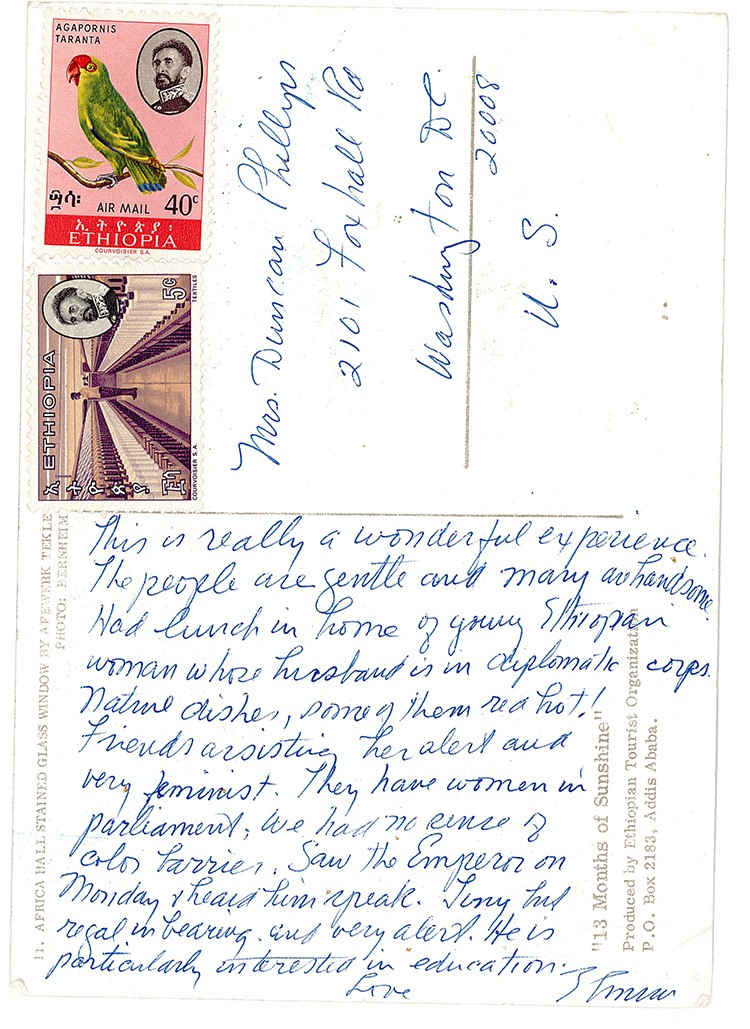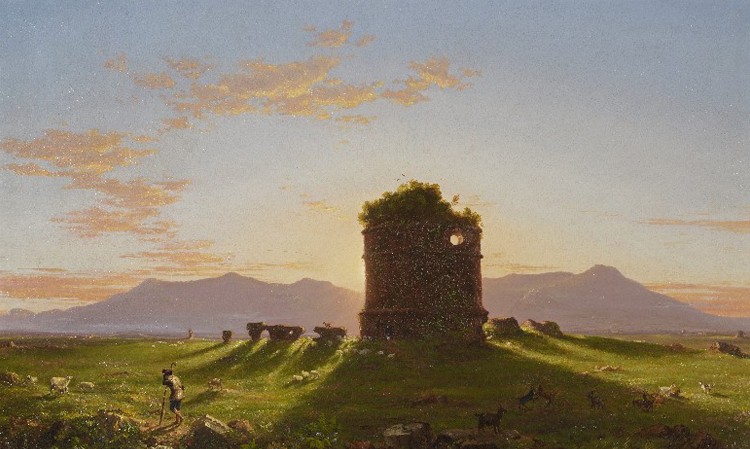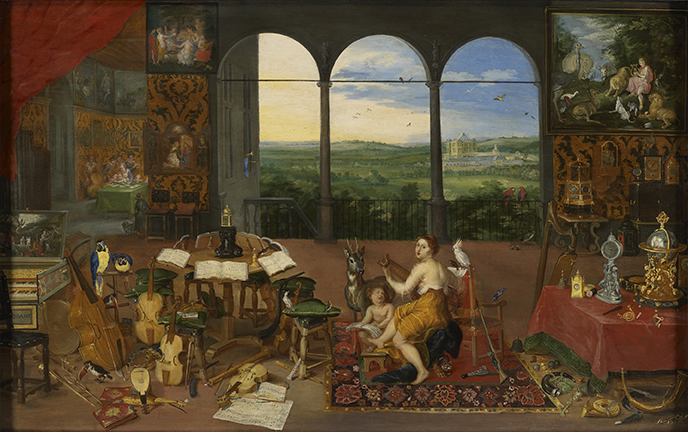
Postcard from Elmira Bier to Marjorie Phillips, undated. From The Phillips Collection archives
Women of Influence: Elmira Bier, Minnie Byers, and Marjorie Phillips is the current Reading Room exhibition just outside of the Phillips’s library, and examines the critical role that each woman played in the day to day activities of The Phillips Collection. Elmira Bier first started working at the Phillips in 1923, two years after the museum opened to the public, and retired in 1972. Bier was Duncan Phillips’s executive assistant. Fiercely protective of Phillips’s time, Bier took on many responsibilities, including serving as the first director of the music program, beginning in 1941. Despite her lack of formal training, Bier quickly established a widely acclaimed concert series that highlighted new performers and innovative music, which paralleled Duncan Phillips’s support of contemporary art.
Bier traveled extensively with Virginia McLaughlin, the sister of Jim McLaughlin, who was a curator at the Phillips. In addition to trips within the United States, they ventured to Norway and Ethiopia. Bier wrote of the latter, “This is really a wonderful experience. The people are gentle and many are handsome. Had lunch in home of young Ethiopian woman whose husband is in diplomatic corps. Nature dishes, some of them red hot! Friends assisting her alert and very feminist. They have women in parliament; we had no sense of color barrier. Saw the Emperor on Monday and heard him speak. Tiny but royal in bearing and very alert. He is particularly interested in education.”

From left to right, seated in front row: C. Law Watkins, Elmira Bier, Marjorie Phillips, Duncan Phillips. Standing are Ira Moore [?] and on the right Charles Val Clear. Photo circa 1931.





